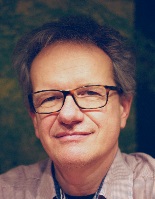Neutronenstreuung
Forschungsgebiet
The Neutron Scattering group at the Physik-Department of Technische Universität München covers a wide and rather complete spectrum of scientific activities ranging from solid physics to materials research and applied physics. Presently, most efforts concentrate on the investigation of magnetic and superconducting properties of strongly correlated electron systems under extreme conditions and the investigation of materials properties using non-destructive nuclear techniques.
Adresse/Kontakt
James-Franck-Str. 1
85748 Garching b. München
+49 89 289 14711
Fax: +49 89 289 14713
Mitarbeiterinnen und Mitarbeiter der Arbeitsgruppe
Sekretariat
| Photo | Akad. Grad | Vorname | Nachname | Raum | Telefon | |
|---|---|---|---|---|---|---|

|
Lisa | Seitz | 211 | +49 89 289-14725 |
Wissenschaftlerinnen und Wissenschaftler
| Photo | Akad. Grad | Vorname | Nachname | Raum | Telefon | |
|---|---|---|---|---|---|---|

|
M.Sc. | Matthias | Dodenhöft | 206 | – | |

|
Prof. Dr. | Christoph | Morkel | 201 | +49 89 289-12157 | |

|
M.Sc. | Lukas | Sigl | – | +49 89 289-11327 |
Andere Mitarbeiterinnen und Mitarbeiter
| Photo | Akad. Grad | Vorname | Nachname | Raum | Telefon | |
|---|---|---|---|---|---|---|

|
Prof. Dr. | Peter | Böni | – | +49 89 289-14711 | |

|
Prof. Dr. | Christoph Pascal | Hugenschmidt | – | +49 89 289-14609 |
Lehrangebot der Arbeitsgruppe
Lehrveranstaltungen mit Beteiligung der Arbeitsgruppe
Abgeschlossene und laufende Abschlussarbeiten an der Arbeitsgruppe
- Analysis of positron annihilations with extreme positional resolution
- Abschlussarbeit im Bachelorstudiengang Physik
- Themensteller(in): Christoph Pascal Hugenschmidt
- Free Volume in Polymers determined by In-Situ Positron Annihilation Spectroscopy During Plastic Deformation
- Abschlussarbeit im Bachelorstudiengang Physik
- Themensteller(in): Christoph Pascal Hugenschmidt